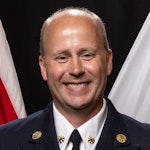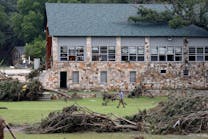The duty chief assignment is a challenging but rewarding position. The duty chief program ensures that a chief officer is on scene during emergencies, which ultimately allows company officers to stay with their crew and maintain crew integrity. As the deputy fire chief for the DeWitt, NY, Fire District (DFD), which is a small combination department, I regularly am assigned as the duty chief.
Shortage of chief officers
A few years ago, the idea of a “duty chief” program came about to ensure that a chief officer was on scene as a resource for whatever was needed during emergencies. We and our mutual-aid partners, Fayetteville Fire Department and Manlius Fire Department, which also are small combination departments, were dealing with staffing issues, particularly at the chief officer level. The duty chief program provided a level of continuity that had been a struggle.
The fire chiefs and the deputy fire chiefs from all three departments staff a rotating, 24-hour shift. They respond to all fires, fire alarm activations, carbon monoxide incidents, motor vehicle accidents, hazmat incidents, technical rescue calls and other significant emergencies.
Often, I stop by during training to observe and learn about crews’ strengths and capabilities. It allows me time to answer questions and give expectations according to standard operating procedures/standard operating guidelines of the three departments. This provides me with the opportunity to interact with everyone in a much more relaxed setting than is possible at an emergency scene.
Risk management
The fire department from which I retired was similar in size to the DFD. As a chief officer, I rode the right front seat and functioned as the company officer and the incident commander. This wasn’t an ideal situation. It was difficult for me to manage both functions at the same time, and the National Institute for Occupational Safety and Health identifies “lack of incident command” as one of the five contributing factors to line-of-duty deaths of firefighters.
Before this program existed, company officers of the DFD and Fayetteville and Manlius routinely assumed the role of incident commander. That no longer is the case. Furthermore, the program aligns with the third initiative of the National Fallen Firefighters Foundation’s (NFFF) 16 Life Safety Initiatives: risk management.
Response guidelines
The duty chief program also provides opportunities to develop collaborative response guidelines.
Many departments use preassigned run cards or box alarms with particular pieces of equipment (for example, Engine 1). True, these systems indeed are helpful for ensuring proper responses, but we took a slightly different approach.
After many meetings and discussions, we developed response guidelines for first-, second-, third- and fourth-arriving units, not particular apparatus. Our response guidelines clearly state the duties of each arriving unit in the order that it arrives. Can there be deviation? Of course, just as long as the deviation is announced to incoming units. An example of this would be if the first engine on scene of a working fire didn’t bring in water from the hydrant.
Fireground safety
The duty chief program of the DeWitt, Fayetteville and Manlius departments provides the most amount of consistency that’s possible at all incidents. The program isn’t perfect, but it ensures that a chief officer will be on scene if needed.
The program provides opportunities for collaborative training and response guidelines.
Many departments struggle with recruitment and retention issues, which ultimately relate to fireground safety. If this sounds like your department, then the duty chief program might be for you.







